





 News
News
KGT is seeking a new TreasurerPosted: 2nd Dec 2024
We are seeking a permanent replacement for Evie Burton, our previous Treasurer, who has left us for pastures new. The position involves maintaining financial records, producing Management Accounts and Treasurer’s report for the four Trustee meetings held annually.
The time commitment averages a few hours per week, working mainly from home.
Previous experience in a similar role for a small organisation or a charity would be an advantage but is not essential. For full details please contact Mike O’Brien, Trustee, on 07766 433722 or by email at michealobrien528@btinternet.com
Queen Caroline and the Landscape GardenPosted: 12th Nov 2024

Queen Caroline
Zoom lecture by Michael Charlesworth.
6pm, 11th December 2024. Members £6.00, Others £8.00
Book via The Gardens Trust website www.thegardenstrust.org/gt-events
Conventional ideas of the invention of the landscape garden in 1730s England attribute the creation of this new form of naturalistic garden design to male gardeners (William Kent, Charles Bridgeman) and/or landowners (the Earl of Carlisle, the Prince of Wales, Lord Cobham, General Dormer, etc.).
This talk will consider the activities of Caroline of Ansbach, Queen Caroline 1727-37 (wife of George 2nd), and debates within her intellectual circle. The focus will be on underlying religio-scientific concepts crucial to developing views of the natural world that were taking place in Caroline's lifetime (1683-1737). Such views were a pre-condition of the new form of garden that took shape in the 1730s. We will also focus on the intellectual ramifications of her transition from Ansbach to England, as Princess of Wales, in 1714. For particular reasons she was responsible for the design of a garden building that the talk will represent as seminal to the landscape garden.
The gardens involved are those at Richmond, Kensington Palace, and Stowe.
Michael Charlesworth gained his PhD in History and Theory of Art from the University of Kent at Canterbury. He is currently a professor of art history at the University of Texas at Austin teaching 19thC European painting and photography. He has written the first full length biography of Reginald Farrer, a critical life of Derek Jarman, as well as major articles on early photography, the picturesque, and 18thC panoramic drawing. His book Landscape and Vision in Nineteenth-Century Britain and France was published in 2008.
Flowers from GivernyPosted: 7th Sep 2024

PAMELA KAY Art Exhibition
Flowers from Giverny: A Lifetime’s Love of Gardens
PREVIEW WEEKEND 14 - 15 SEPTEMBER 2024 11 AM - 5 PM
Guests welcome. Refreshments served
A lifetime’s love of Monet, gardens and flowers comes together in this exhibition of
Pamela Kay’s recent paintings.
This Exhibition opens from 14th September until 6th October 2024
https://canterburyfineart.com/usr/documents/exhibitions/press_release_url/9/pk-exhibition-catalogue-24-pdf.pdf
Restoration in ActionPosted: 7th Jan 2024
Two of our Trustees will give talks in the series of ZOOM lectures offered by The Gardens Trust under the heading Restoration in Action.
Sarah Morgan’s talk on Wednesday February 21st at 6pm is entitled FRIARS AND FLORA – RECREATING THE FRANCISCAN GARDENS IN CANTERBURY
Karen Emery’s talk on Wednesday February 28th at 6pm is entitled PATHWAYS TO PUBLIC LANDSCAPES and is based on our research in Swale.
Full details for booking are on The Gardens Trust website www.thegardenstrust.org/events .
All other 2024 events will be bookable on the Kent Gardens Trust Events page.
THE HYDRANGEA - A REAPPRAISAL, Maurice FosterPosted: 4th Jan 2024
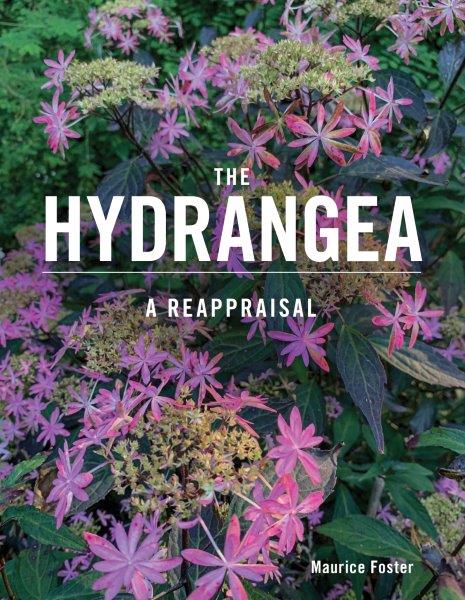
A review of Maurice Foster’s new book by François Gordon
208 pages, profusely illustrated, Crowood Press
Maurice Foster has spent more than five decades studying, cultivating and hybridising hydrangeas, not to mention collecting hydrangea seed and cuttings from all over the world, including the wilds of western China. His deep familiarity with and affection for the genus shines through this superb book which I predict is set to become the definitive text.
He begins with a “potted” history of the introduction of the hydrangea to Europe, starting with the American Quaker John Bartram in 1736 and running up to the mid-twentieth century. The heart of the book then sets out in clear and lucid prose the global distribution and classification of different hydrangea species and the detailed story of how over the last half-century horticulturalists have transformed what is, in the wild, a modestly attractive genus with a restricted colour palette into what is by any standard a large and diverse group of striking cultivars with a host of qualities calculated to make them almost irresistible to Western gardeners.
The author’s descriptions of each species and its principal (plus quite a few rare or unusual or simply interesting) sub-species and cultivars are complemented by nearly two hundred high-quality photographs and by his recollections of his experience in growing or encountering the particular plants concerned. You couldn’t hope for a better guide to choosing hydrangeas for your garden and the book would be well worth buying for this section alone. There follows a detailed and well-illustrated guide to good practice in growing hydrangeas in the garden and an equally clear and comprehensive guide to propagating them.
Finally, Maurice shares his thoughts on what developments in hybridisation we can hope to see in the not-too-distant future and an amusing postscript about personal favourites. Throughout, the well-written narrative engages the reader’s interest and makes one want to carry on reading to see what comes next.
Physically, this is a handsome hardback, a pleasure to hold and to read, admirably laid out and printed on heavy silk-coated paper which means the photos are of excellent quality in both definition and colour. Frankly, my first reaction on unwrapping my copy was to wonder how the publishers had achieved this standard for the money (rrp £25, but it can be bought on Amazon and elsewhere for less than £22). Certainly, I have paid substantially more for books of lesser quality.
Gripes? Well, there has been a touch of cheese-paring in the index, which covers only hydrangea species and cultivars, an unfortunate weakness in a book full of amusing and instructive asides about the great and the good of the horticultural world. And it’s a pity that the person who did such a good job on the layout isn’t recognised in the publisher’s credits. But these are trivial cavils: the bottom line is that even if you buy only a single book on plants in 2024, you really should make it this one.
New bursaries and small grants schemePosted: 15th Dec 2023
The Committee of the Kent Gardens Trust aim to run the KGT at a small annual profit and to maintain reserves at a level consistent with prudence and good accounting practice. Over the last few years we have been broadly successful in the first of these objectives and as a result we are able in 2024 to draw down on reserves to offer a small number (not more than two or three) of bursaries or small grants to Kent gardens. With all due caution, we hope that we may be able to continue this offer in subsequent years.
Two new trustees at KGT!Posted: 9th Oct 2023
We are delighted to announce that two new trustees have recently joined our team.
Karen Emery
Karen’s background is in education with experience in schools, colleges and managing a prison education department. She is also a qualified Tour Guide for Canterbury and SE England and is fully bilingual with German.
Karen recently obtained an MA in Garden and Landscape History and also has a BSc in Geology and a Post Graduate Certificate in Education. These contribute to her wide-ranging understanding of landscape and the natural world.
Karen joined the KGT in 2021 and is now co-ordinating the Swale Gardens Research Group. She is keen on increasing participation in garden research as well looking at ways of disseminating the fascinating histories of local parks and gardens.
Caroline Bowdler
Caroline brings a wealth of experience to the Trust having been a committee member and Conservation Officer for Bedfordshire Gardens Trust as well as a trustee of two local charities. She moved to Sevenoaks in 2021 and joined the KGT research team.
Caroline has knowledge of planning from her time at the Department of the Environment. She appreciates that designed landscapes across Kent have many challenges and they need champions to understand, enjoy and protect them. She looks forward to contributing to the Trust’s work in addressing these issues.
Kent Gardens Trust treasurerPosted: 1st Jul 2023
Evie Burton has been appointed as our new treasurer. Evie is a lover of all things ‘outside’, she enjoys mountain biking and hiking, as well as watersports. She graduated with an honours degree in Earth science from the University of Glasgow, and when she’s not up a mountain or in the sea she particularly likes helping to maintain her family’s vegetable garden.
News from The Gardens TrustPosted: 12th Sep 2022
Leeds Abbey Development Proposal Rejected
The landscape of Leeds Abbey – perhaps Capability Brown’s smallest complete commission – may be unlisted but it is no less historically significant for that. Kent Gardens Trust and the Gardens Trust recently responded to a planning application to build a new manor house there, objecting to details of the current plan and the lack of any legally binding agreement to restore the Brown landscape. We were therefore relieved to hear that Maidstone Borough Council has turned down the application.
Boxing cleverPosted: 8th Jul 2022
Kent Gardens Trust member and box specialist, Jenny Alban Davies, has just had published “Gardener’s Guide to Box”. The book describes the use of box in a wide range of both large and small gardens with notes on twenty Buxus species. The book also advises on growing box, creating topiary and dealing with problems including blight and the box tree caterpillar. A must-read for box lovers!
Published by The Crowood Press Ltd.
ISBN: 9780719840753
New plants in Archbishop’s Palace GardenPosted: 13th Feb 2022
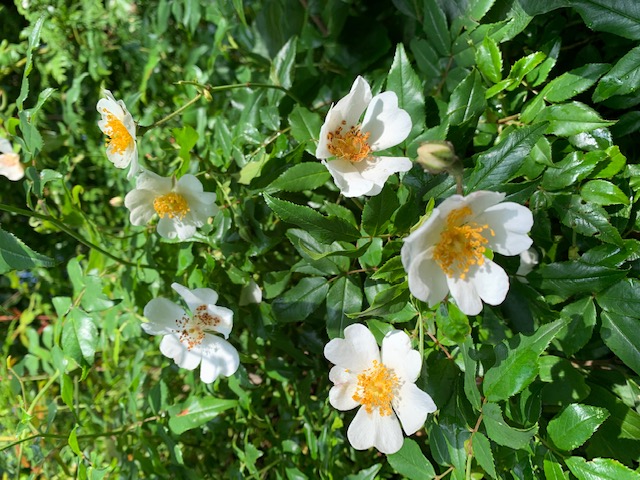
We have planted Rosa sempervirens cuttings.
This evergreen rose, with small glossy leaves and a single white flower, was well known to the Apothecary John Parkinson by 1629. It is wild around the Mediterranean Basin but not in Britain. It is related to our common field rose, Rosa arvensis. The plant in the picture was grown from a cutting from the ruins of the wonderful gardens around Hadrian’s Villa at Tivoli near Rome. Could it be a descendent of one of Hadrian’s garden roses?
Did you know: Jacques, the head gardener to Louis Philippe future king of France, crossed Rosa sempervirens with old China roses in the 1820s. The perfect, white pompoms of his rambler rose Félicité–Perpétue can often be found in old gardens.
We have also planted saffron crocus, Crocus sativus, kindly given to us by Andrew Bodey who founded Kentish Saffron four years ago. This will flower in the autumn. It takes about 150 flowers to produce 1 gram of saffron!
www.kentishsaffron.co.uk
Planting DELOS at SissinghurstPosted: 20th Jan 2022
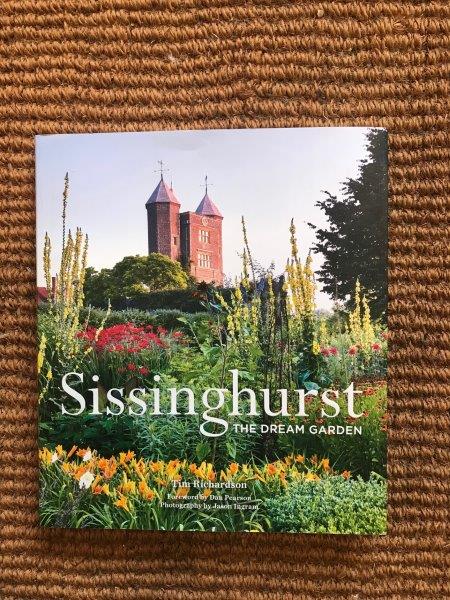
DELOS at Sissinghurst
Following Juliet Nicolson's recent and inspiring ZOOM talk for KGT, and the publishing of Tim Richardson's marvellous new book, we thought it would - with Tim's permission - be of interest to post a brief description of the DELOS planting scheme.
Sissinghurst: The Dream Garden by Tim Richardson, £30.00 published by Frances Lincoln
Trees and large shrubs were the first plants to go in: cork oaks, pomegrante, fig, almond and arbutus. The shrub mix includes seven kinds of cistus, phillyreas, Sarcopoterium spinosum, pistacia, rhamnus and the smaller olive Olea europaea 'Cipressino', with support from lavenders, thymes, rosemaries (including R. × mendizabalii) and myrtles.
No fewer than nine different species of phlomis have been planted in the garden, along with salvias, five species each of teucrium and dianthus, coronilla and euphorbias. More decorative perennial ‘border’ plants include achilleas (A. coarctata, A. crithmifolia, A. umbellata), linarias, Centaurea bella, Verbascum olympicum, Delphinium staphisagria, the very blue Eryngium amethystinum, Iris lazica and I. unguicularis 'Lucien’, and the crimson peony, Paeonia peregrina. These plants are not planted as border plants, but have been dispersed so that as far as possible they mimic how they might grow in the wild.
The ‘maquis’ plants of the region will perhaps contribute most to the atmosphere and include subjects such as Sideritis cypria, S. syriaca, Inula verbascifolia, Sedum sediforme, Stachys cretica and various oreganos, along with a handful of perennial grasses such as Melica ciliata and Stipa barbata.
One of the most interesting aspects of the garden is the emphasis on annuals grown from seed (some of it collected directly from Delos). Most of them are wildflowers, such as the dramatic Trifolium stellatum; the spotted rock rose, yellow Tuberaria guttata; hartwort (Tordylium apulum); salsify (Tragopogon porrifolius); and the bright purple wildflower Legousia pentagonia. The wild blue lupine, Lupinus pilosus, is sure to make a dramatic showing.
Other interesting annuals include Fumaria capreolata: the white ramping fumitory with exquisite purple-tipped flowers; orange-flowered scarlet pimpernel, Anagallis arvensis; the unusual Cuprina cuprinastrum; and the vivid little pink Silene cretica. Less demonstrative are pale flax, (Linum bienne) and soft-mauve Knautia integrifolia (grown from seed collected on Delos). Of bulbous plants there are several hundred each of Corydalis solida, Galanthus elwesii, Crocus sativus, Crocus pulchellus, Narcisssus tazetta, Sternbergia lutea, Cyclamen coum and Scilla hyacinthoides.
In addition 750 Galanthus gracilis and 400 Anemone apennina have been planted. Large numbers of native Mediterranean annual grasses (eight different species) are being grown from seed, so that visitors may for a moment believe they are on a Greek island as opposed to a corner of Kent.
From - Sissinghurst: The Dream Garden by Tim Richardson, £30.00 published by Frances Lincoln
Blooming Gardens at Walmer CastlePosted: 18th Jun 2021
Kent Gardens Trust will have a stall at English Heritage's "Blooming Gardens" Event at Walmer Castle. Saturday 19th and Sunday 20th June, 10 am to 5 pm. Tickets for the event included in Walmer Castle Admission and can be purchased on English Heritage site www.english-heritage.org.uk
Spring Lecture via zoom April 27th 2021Posted: 2nd Apr 2021
Why our gardens should change - Dave Goulson
We are in the midst of the 6th mass extinction event, with extinctions occurring faster than at any time in the last 65 million years. ‘Bioabundance’ is in decline, with recent studies showing that insects in particular seem to be
disappearing fast. If it continues, this will have profound consequences for mankind and for our planet. Dave Goulson will explain why insects are in decline, and suggest how we can all help to tackle this crisis, by turning our gardens and urban greenspaces into oases for life. He will discuss the many things we should do, and those things we should not do, to welcome bumblebees, butterflies, and a plethora of other wildlife into our gardens and into our lives.
Booking is now open for our Spring Lecture via Zoom in conjunction with The Gardens Trust.
Book at www.thegardenstrust.org/events-archive
All other 2021 events can be booked on the Kent Gardens Trust Events page.
News from The Gardens TrustPosted: 28th Sep 2020
Our sister organisation The Gardens Trust has a new Chairman, Peter Hughes. Peter has set out some of the big challenges the Gardens Trust is now facing in the light of proposals which could have a profound impact on our garden and landscape heritage. For example: reform of the planning system and the release of land for development, possible change of strategy at the National Trust. The GT has a vital role to play, assisted by County Garden Trusts, as statutory consultees for all planning applications concerning a listed garden or designed landscape. GT also monitors other changes which do not require a planning application. Learning about historic gardens: The Gardens Trust also runs a range of lectures and courses, open to both members and the general public. The programme of talks, training and educational programmes is currently all online. Full details are on the website www.thegardenstrust.org
Delos Garden at Sissinghurst - one year onPosted: 21st Jun 2020
From building site to newly planted garden: Delos garden transformed since last year. Well worth a visit to see the stunning progress made in this Mediterranean-style garden now that the National Trust has reopened. Designed by Dan Pearson.
ARCHBISHOPS PALACE GARDEN, MAIDSTONEPosted: 18th Mar 2020
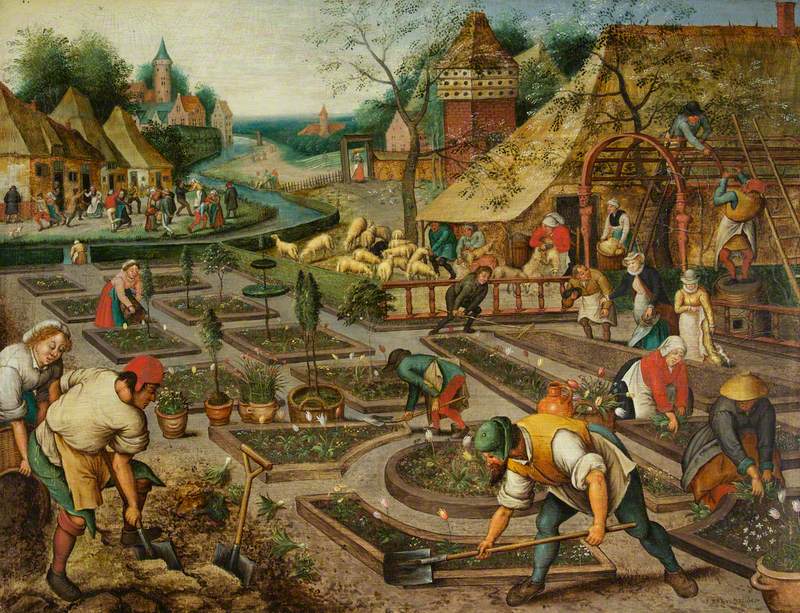
Pieter Brueghel, Spring
Kent Gardens Trust manages this historic garden in the middle of Maidstone for the owner Maidstone Borough Council. It is next to the main surviving buildings of the palace, which is now the Registry Office. It is enclosed by the medieval walls and has the old jail on one side.
KGT replanted the garden five years ago with Entrust funding. We have used only plants described in John Parkinson’s Paradisus Terrestris, published in 1629, or earlier. There are flowers, bulbs, shrubs, roses, herbs, vegetables and fruit trees which provide colour and interest through the year for visitors and as a backdrop for wedding photographs.
The raised beds, with oak board edgings, are typical of the period, as shown in the illustration from Lonicer’s Kreuterbuch herbal of 1557. The wonderful Spring by Pieter Bruegel of 1620-30 shows how these gardens were intensively cultivated.
The garden is open from 9am to 5pm Monday to Saturday.
Marian Boswall gardenPosted: 11th Jul 2019
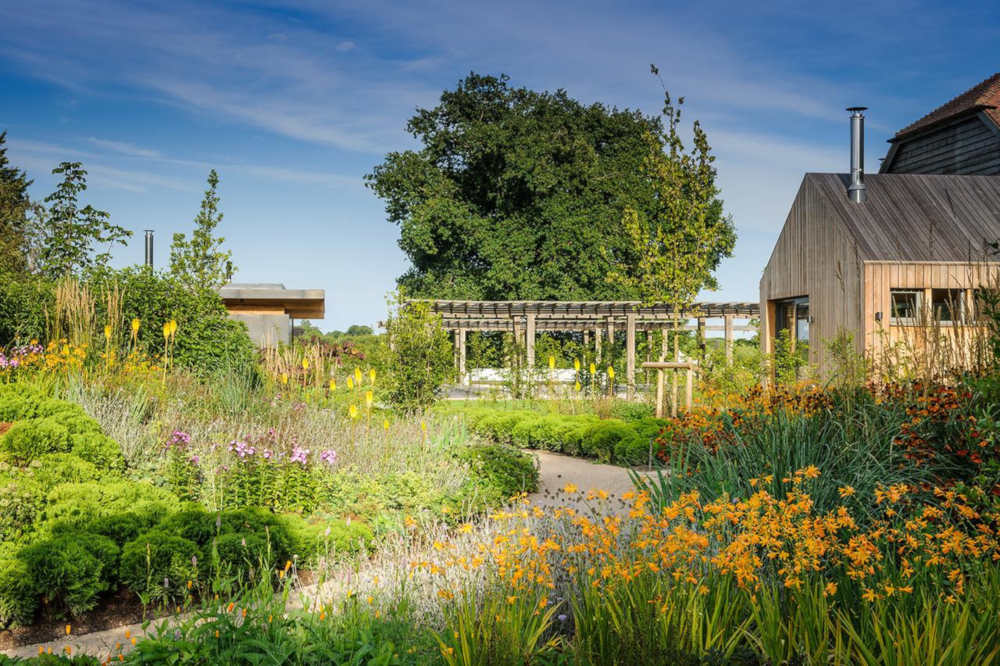
photo by Jason Ingram
KGT Member Marian Boswall has been announced as winner of the Society of Garden Designers’ GRAND AWARD FOR 2019 as well as winner of the LARGE RESIDENTIAL GARDEN for her work at Reighton Wood, near Tenterden. There is an excellent article on the garden in Gardens Illustrated, July 2018 (written by Troy Scott Smith), and further information on Marian’s website www.marianboswall.com
Delos Garden project at SissinghurstPosted: 27th Jun 2019
Recreating Delos Garden
Some of Vita and Harold’s ideas were unsuccessful. An area of their garden known as ‘Delos’, was inspired by their visit to the Greek isle in 1935. On their return they aimed to emulate the feel of Delos at Sissinghurst. However, the Kent climate and north-facing position of the garden, combined with their limited knowledge of Mediterranean planting, meant that the garden never really became all they hoped for and instead resulted in a woodland feel. The new concept addresses their issues around light, drainage and Mediterranean planting.
Garden designer, Dan Pearson, is working with the Sissinghurst team to complete Vita and Harold’s vision. Using current design practices, clever landscaping and a broader spectrum of planting, a more robust and sustainable garden will be created while still maintaining the spirit of Vita’s ambition.
www.nationaltrust.org.uk/sissinghurst-castle-garden
Walmer Castle: opening Lost Pleasure GroundsPosted: 30th May 2019
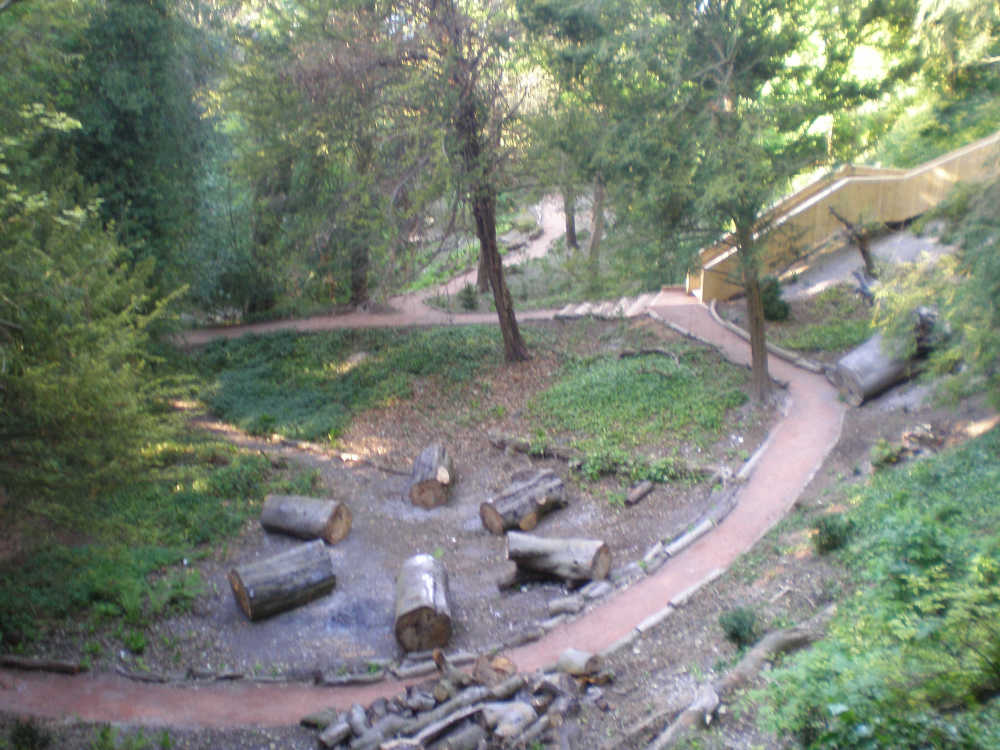
Walmer Castle - the restored Glen
Kent Gardens Trust were invited to celebrate the opening of Walmer’s Lost Pleasure Grounds on 21 May. Lottery funding had allowed English Heritage to restore the perimeter woodland paths and to open up the Glen (a former chalk quarry) which had originally been created as part of the gardens by William Pitt the Younger and his niece Lady Hester Stanhope.
A new family trail has been created through the woods with a variety of activities for all ages to enjoy at various points along the trail. Having been overgrown and difficult to access, evergreen planting has taken place to represent the planting mentioned in Lady Hester Stanhope’s letters.
There is a new glasshouse café in the kitchen garden setting together with a purpose-built learning room for community use.
All well worth a visit.
Cherry Ingram bookPosted: 22nd Mar 2019
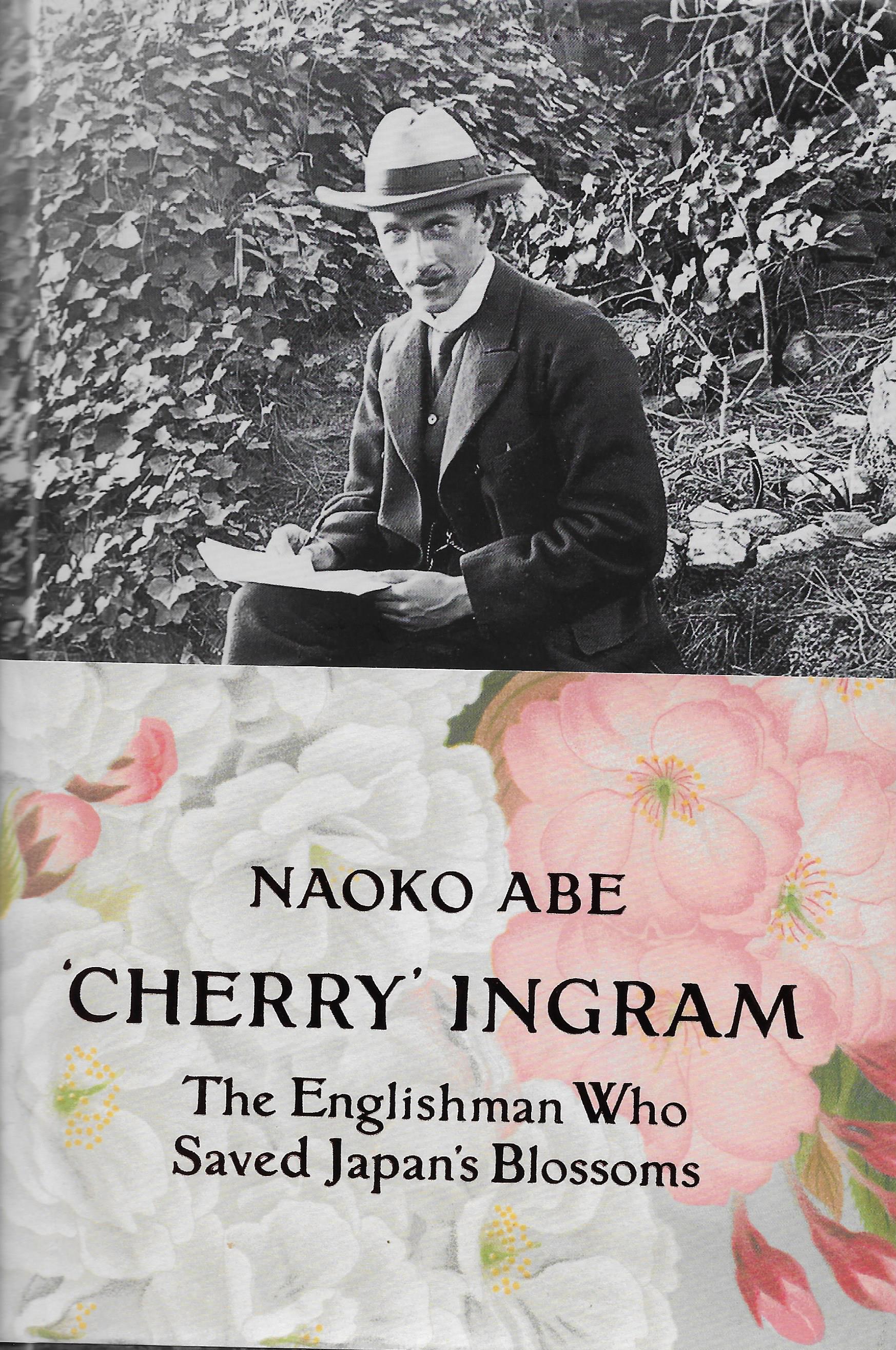
Cherry Ingram
Collingwood Ingram (1880 – 1981), known as Cherry for his defining obsession, is the subject of a book, ‘Cherry’ Ingram, by Naoko Abe to be published on 21st March by Chatto and Windus. It tells the story of Ingram’s visits to Japan and his fascination with the flowering cherry trees which had become in danger of neglect; his dedication to their preservation and propagation at his home in Benenden. The tale of his discovery of the great white cherry, Taihaku, in this country and its return to Japan is retold together with the history of the cultivation of cherry blossom in Japan and just how important it is to its people.
New book on Repton now available!Posted: 12th Oct 2018
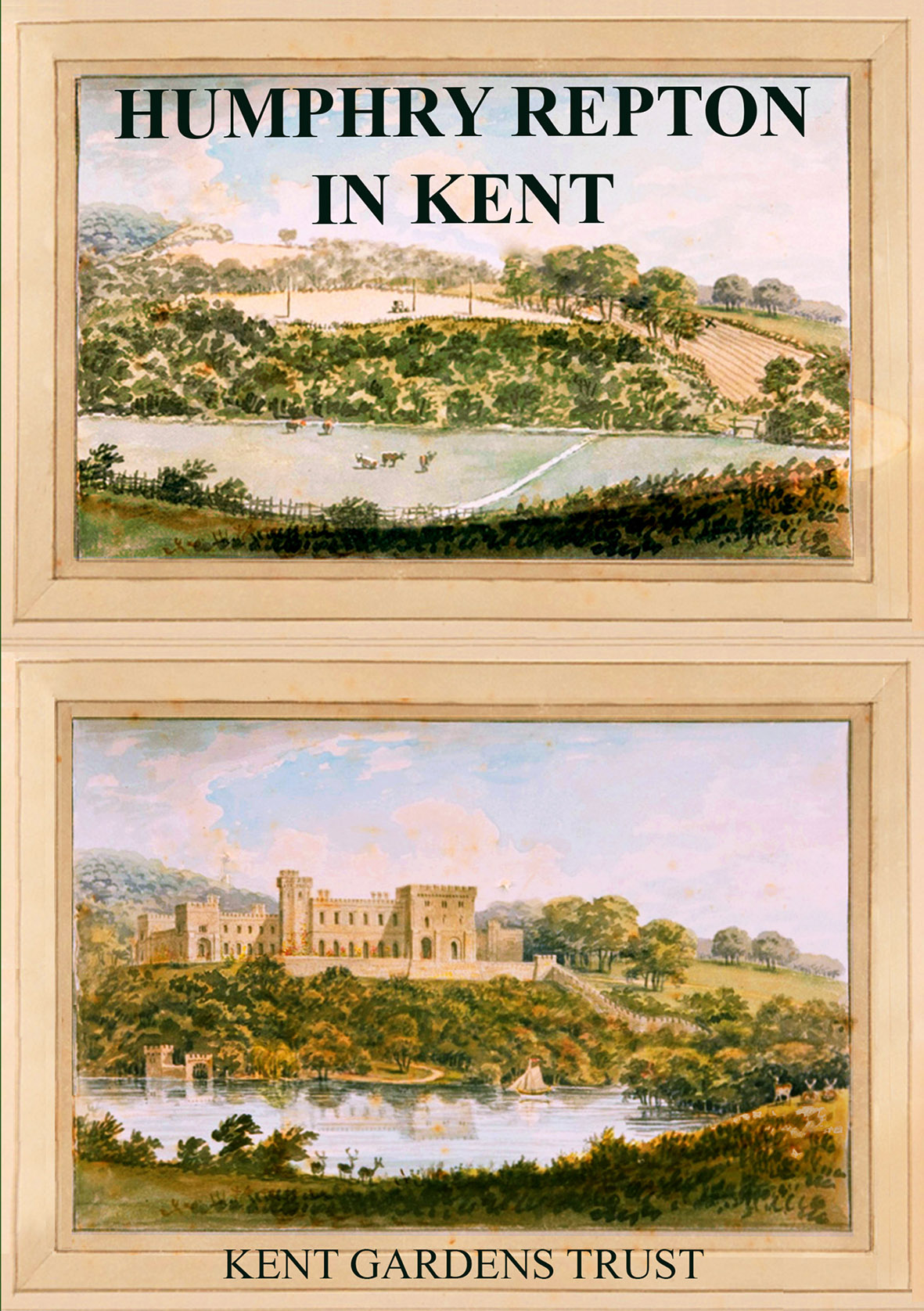
Our book about Repton
We are delighted that our new book about the work of landscape gardener, Humphry Repton, is now available. Copies will be on sale at the Repton study day on 22nd October. You can also buy a copy online by going to the Publications page at www.kentgardenstrust.org.uk/publications/ The book costs only £8.00 for members (£10 for non-members). When ordering online you need a special member code to get the member discount. This was emailed to members in our recent mailshot or you can email our secretary, Lynn Phillips at lynn.phillips@kentgardenstrust.org.uk or phone her on 07432 633697. Happy reading!
Archbishop's Palace garden given new lifePosted: 10th Oct 2017
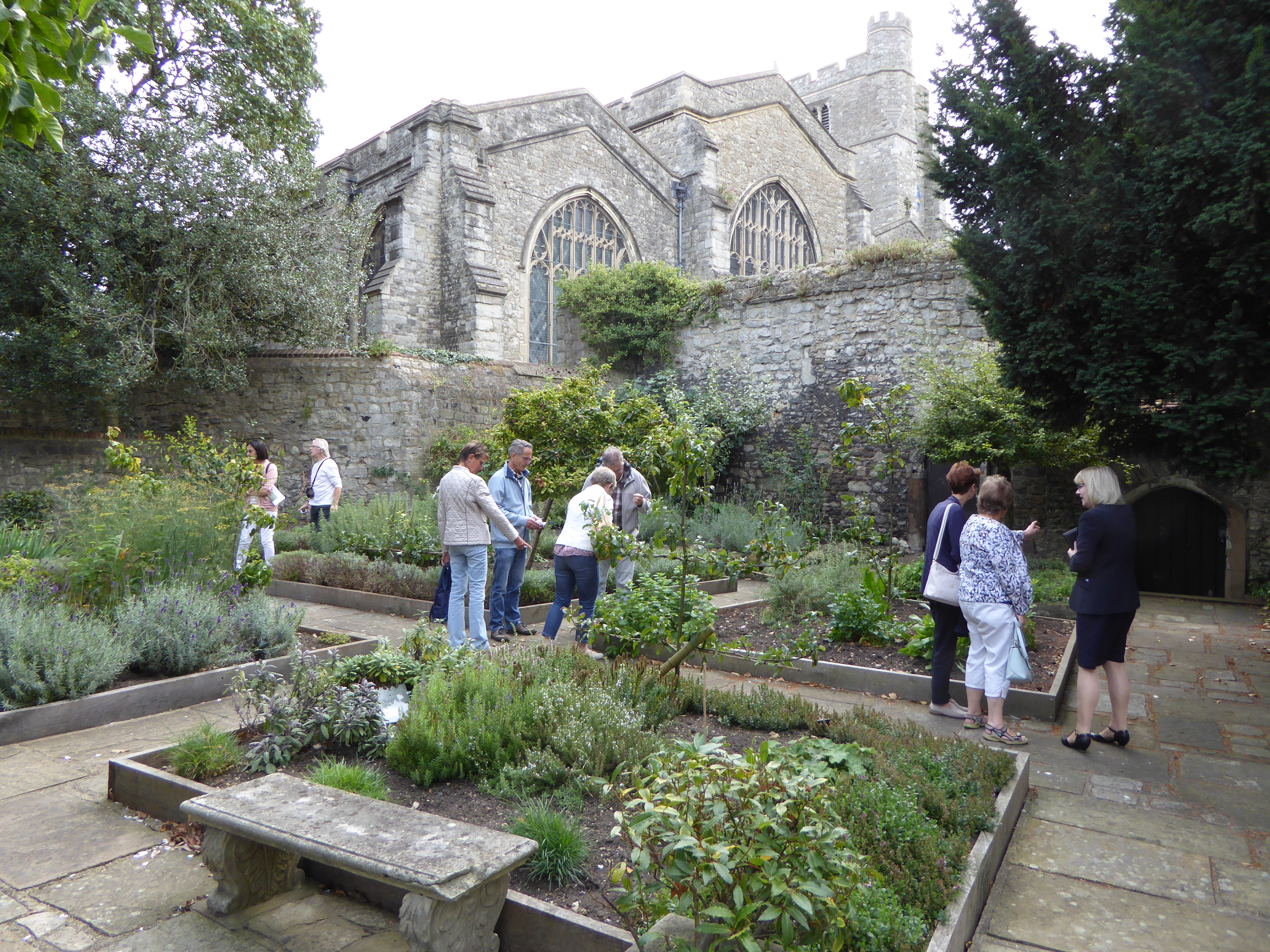
Visitors enjoying the garden in September
Over the last few years the Archbishop's Palace garden in Maidstone has been refurbished and replanted by the Trust. You can read more about the work we have done on the Conservation page of the website. The photograph shows members of the public looking round the garden on the Heritage Open day in September this year when the Archbishop's Palace was also open. All Saints Church is in the background. The garden is open on most days so do pay a visit and take a look!
Great reaction to 'Capability Brown in Kent'!Posted: 6th Jun 2016
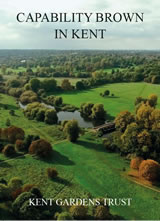
Valence in the early19th century
Many of you will have now read our new book 'Capability Brown in Kent' which was published towards the end of April 2016. We are delighted that many mainstream bookshops as well as most National Trust properties have agreed to sell the book. Sales are looking good so far. We are also really pleased that many eminent commentators have made very favourable comments about the book. Here are just two examples:
Professor Tom Williamson of University of East Anglia said 'What a wonderful book! Nice text, scholarly yet readable and beautifully produced. Congratulations to all concerned'.
Professor Michael Mullett of Lancaster University said 'This is a superb example of a collaborative production and you are all to be warmly congratulated - a lovely book in every sense, with beautiful illustrations on nearly every page and all at under £10. It will be well received'.
Go to our Capability Brown page for details of how to buy your copy.

